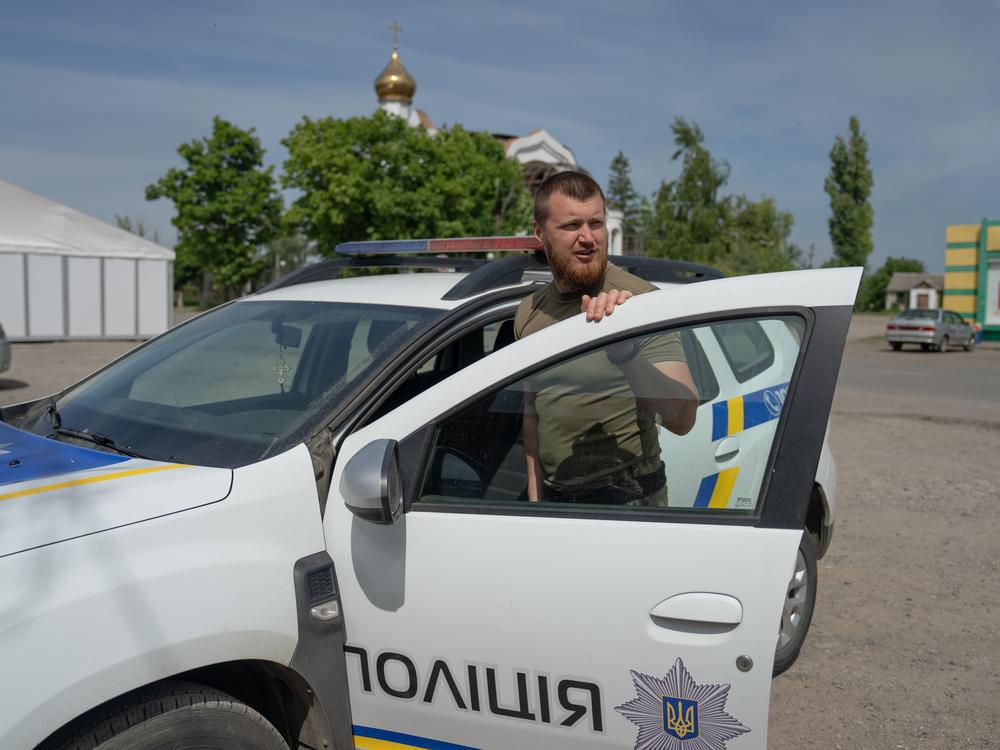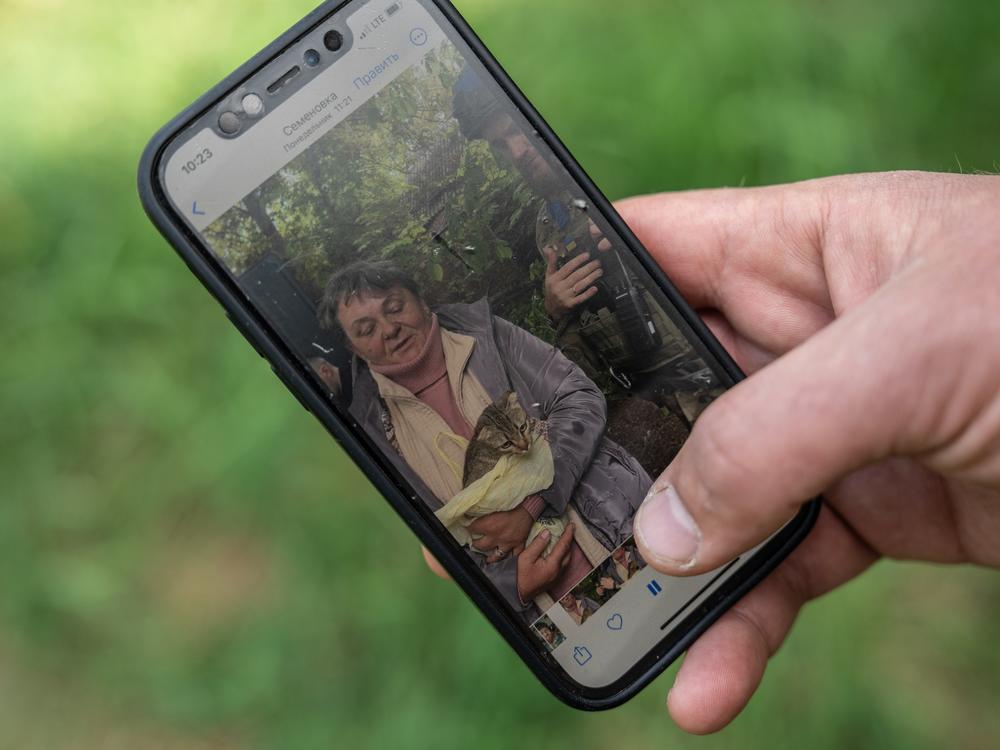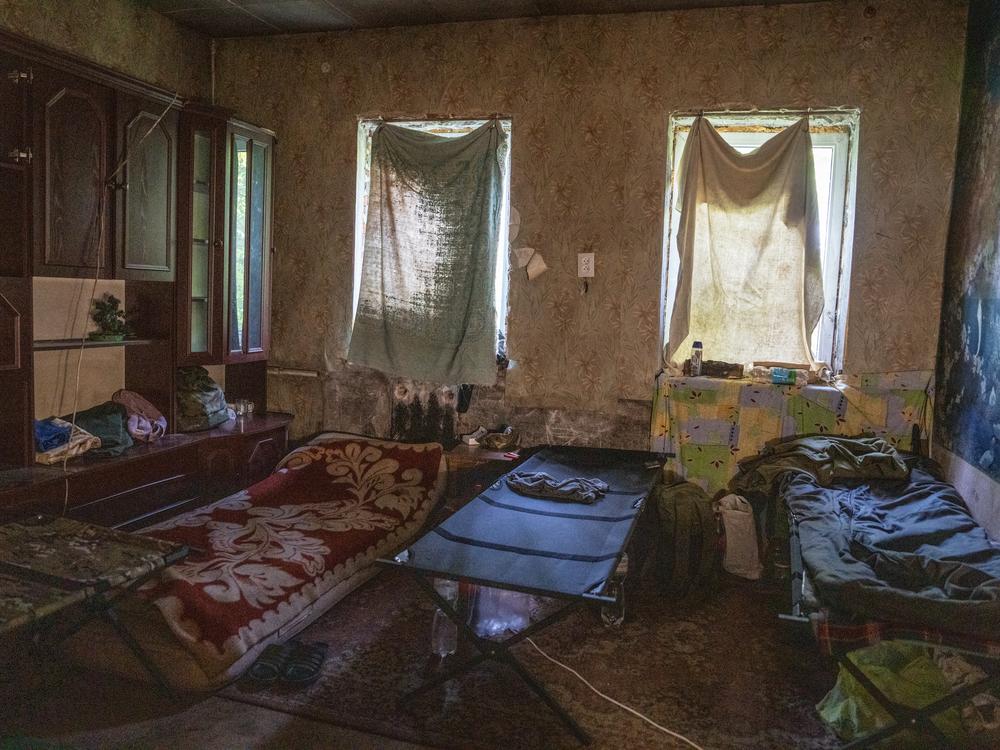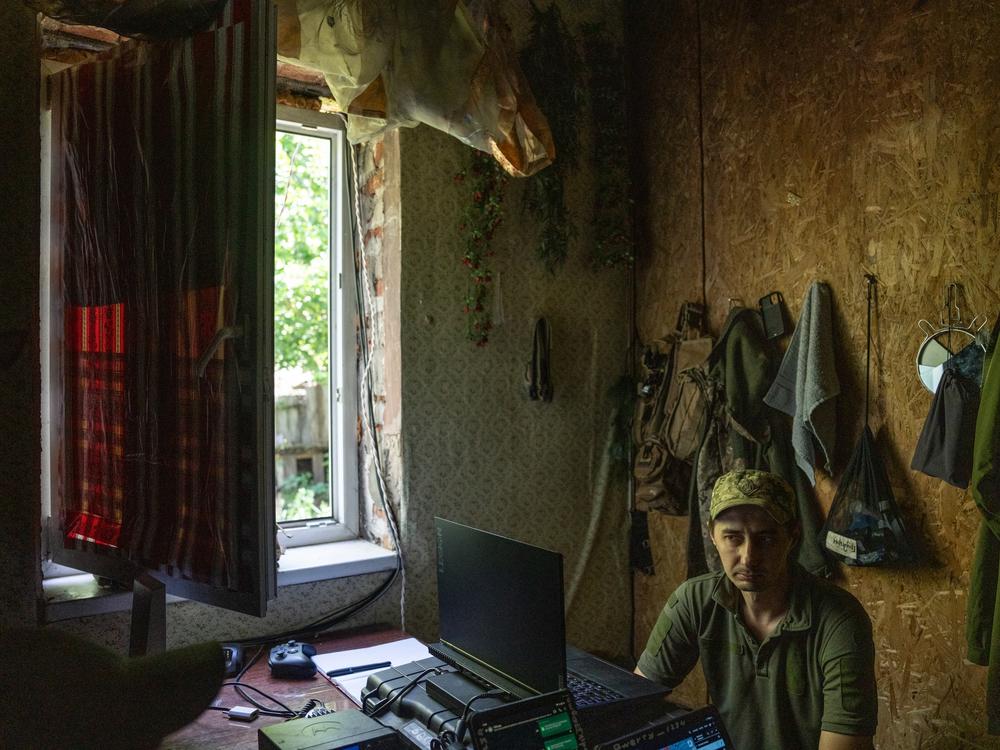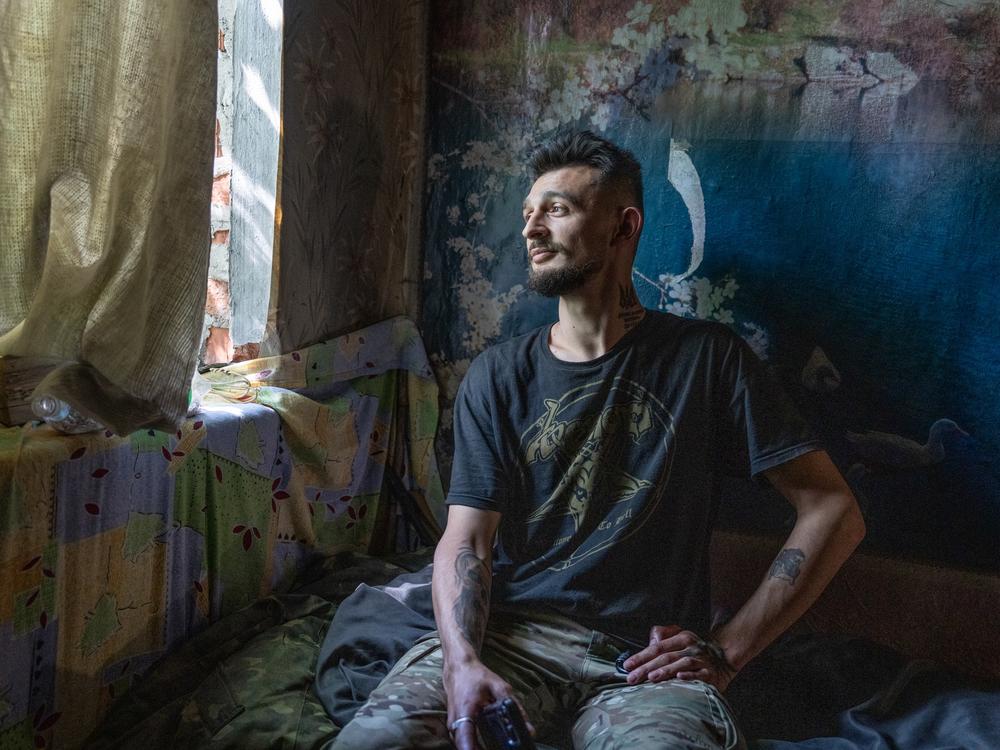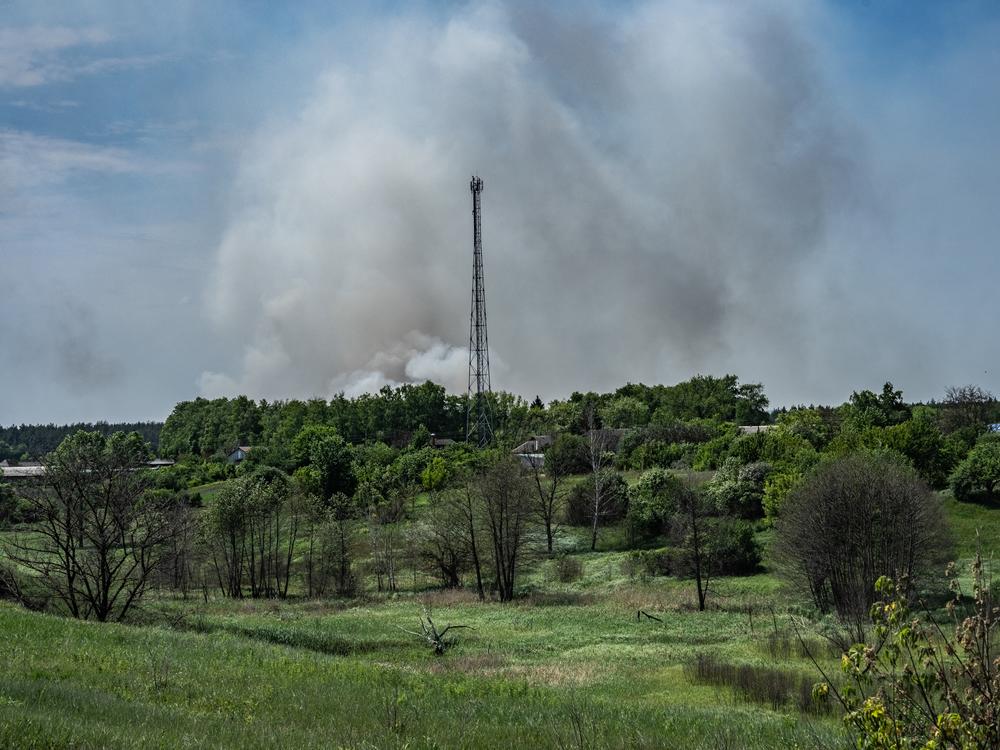Section Branding
Header Content
Near Ukraine's front line, a devastated community takes stock after Russian advances
Primary Content
KHARKIV REGION, Ukraine — For the last 10 weeks, a battle has raged for a small border town just five miles from Russia.
The fact that Russia invaded Vovchansk was no surprise; Russian troops had massed along the border with northeastern Ukraine as under-resourced and overstretched Ukrainian troops waited for military aid from the U.S. and Western allies.
For Oleksii Kharkivskyi, head of the patrol police in town, it felt like a real-life example of what happens without enough of that aid.
“We tried to prepare,” he says. “But the Russians stormed in and dropped so many bombs.”
Kharkivskyi grew up in Vovchansk, fishing in the woodland ponds and hiking along the Vovcha river that bisected the town. He helped evacuate his neighbors through those woods when Russian forces occupied Vovchansk in February 2022. A few months later, Ukraine recaptured the town — but only a quarter of its 18,000 residents returned. They faced daily Russian shelling.
“We, as the police force, were there to try to give people confidence to stay,” Kharkivskyi said. “I got to know everyone personally.”
When the Russians invaded again in early May, he found himself evacuating his neighbors, mainly elderly people who wept as they left everything behind. He filmed the evacuations and posted the videos to Facebook.
“I wanted to show everyone what it looks like when a town runs out of ways to defend itself,” he said.
Serhii Kuzan, who leads the Ukrainian Security and Cooperation Center, a defense think tank in Kyiv, said delays in military aid from the U.S. and Europe emboldened Russia to mass troops along Ukraine’s northeastern border with Russia.
He said the offensive started to stall only after that aid started trickling in and the U.S. gave Ukraine permission to use American-supplied weapons to strike at limited military targets in Russia.
“Ukrainian intelligence warned about Russian plans in the northeast,” Kuzan said. “The lack of ammunition and the lack of resources led to a loss of precious time.”
Outgunned on the front line
Deep in the woods, not far from Vovchansk, the command center of one of the 57th Separate Motorized Brigade’s battalions set up a temporary base.
The battalion commander, Yurii Lunyov, said at the beginning of the offensive, supply lines to the front line were blocked by Russian fighter jets constantly dropping guided bombs in and around town. These bombs have pop-out wings and satellite navigation.
A soldier from the brigade, Rodion, who did not reveal his last name for security reasons, monitored a screen in late May showing Russian and Ukrainian soldiers fighting in the streets of Vovchansk.
“We are rationing ammunition," he said. “But the Russians have the resources to drop countless bombs, even on very small targets, like on three soldiers.”
The guided bombs remain a challenge but Lunyov, the battalion commander, said the Russians seemed to slow down after the U.S. allowed Ukraine to use American-issued weapons to strike at military targets in Russia. Those strikes, he said, “appeared to have damaged logistical chains and equipment in Russia.”
However, Russia continues to send waves and waves of infantry. The brigade's artillery unit is trying to hold them back.
Deeper into the woods, along a dirt road, the unit’s commander, Nur, who didn’t want to give his full name for the same security reasons, said the unit lacked long-range shells.
“If we had these,” he said, "we could have fired at Russian troops before they reached Vovchansk."
Out of time
Some Western military aid has now arrived on the front line. It's helped Ukrainian troops stop the Russian advance here. But there's not much left of the town beyond ruins and rubble.
Dozens of people are still in Vovchansk, hiding in basements as Russian troops continue to attack the town. Earlier this month, soldiers and local police officers evacuated three children.
Evacuations are dangerous. At the end of May, hundreds mourned a police officer killed by a Russian drone during an evacuation. The memorial was held in a basement about 30 miles from Vovchansk, in the city of Kharkiv. Outside, air raid sirens blared.
The wartime administrator of Vovchansk, Tamaz Gambarshvili, limped as he walked behind the coffin.
"The enemy struck a place where we had set up evacuation headquarters," he said. "I got a shrapnel wound in my left thigh."
Gambarshvili is in charge of relocating evacuees from Vovchansk. Many ended up in a student dormitory that’s now empty because of the war.
Liudmyla Kuznetsova, a 79-year-old retired bread factory accountant, said she and her family were among the last to leave Vovchansk.
“Whenever the doors and windows were blown off [our home], we would just repair them,” she said.
But she ran out of supplies, and Vovchansk ran out of time.
She left at night with only the clothes on her back as her hometown burned.
